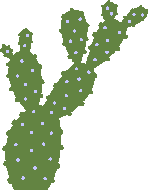 Grow Some Aloe Vera - June 22, 2011 Jeff Schalau, Associate Agent, Agriculture & Natural Resources University of Arizona Cooperative Extension, Yavapai County Aloe Vera (Aloe barbadensis) is probably the most widely used medicinal plant in the world. It is originally from Africa, but the exact geographic origin of Aloe Vera is questionable because it is easily transplanted and has been used medicinally for over 6,000 years. It is widely used in the home to treat cuts and burns, but has been used to treat other maladies by various cultures. There are references to Aloe Vera from the Egyptian, Greek, Roman, Indian, and Chinese cultures. The Spanish brought it to South America and the Caribbean Islands. It is in most homes and people continue to share it with friends. There are about 180 Aloe species. All are succulents and they range from short-stalked clumps, like Aloe Vera, to trunk forming forms that resemble small trees. In Africa, they occupy the same ecological niche that Agave occupies in our southwestern deserts. Aloe Vera grows as a flattened, rosette which spreads outward by underground rhizomes and forms a cluster of fleshy leaves edged with short, soft prickles. The leaves are usually 8 to 10 inches long and speckled with patches of light green and gray, giving a mottled appearance. Aloe Vera can be grown outdoors in areas where there is no chance of freezing and produces flowers in the spring in the desert. The flower stem is 2 to 3 feet tall and topped with profuse tubular yellow flowers. Aloe Vera makes an excellent potted indoor plant when kept in a bright location near a south or west facing window. During the summer months, the soil should be completely soaked, but allowed to dry between watering. Use a good commercial potting mix with extra perlite, granite grit, or coarse sand added or packaged 'cacti mix' potting soil. The pot should have a large drainage hole. Fertilize in the spring with a dilute solution of bloom type fertilizer (10-40-10). Potted Aloe Vera plants can be moved outdoors during the summer as long as you remember to bring them back indoors prior to the first fall freeze. Aloes are often propagated by removing the offsets (also called pups) which are produced around the base of mature plants, when they are a couple inches tall. If needed, cut the offset away from the mother plant with a clean sharp knife. Allow the wounded area to dry and scab over for two or three days before replanting in the potting mix. This will prevent disease organisms from harming the young plant. Aloes can also be grown from seed but takes time and is most successful under greenhouse conditions. Aloe Vera is also big business. One company lists over 300 kinds of cosmetics, medicines and ointments that are made from various Aloe extracts. Most of the Aloe grown commercially is from the Caribbean, south Florida or south Texas. The leaf is cut lengthwise to extract the sap within. The sap is evaporated and yields a crystalline glycoside called “aloin” which is very bitter. This is used in many products and is listed as “Aloe extract” on the product label. While medical research has failed to validate many of the believed properties of Aloe Vera, fresh sap is widely used to sooth minor burns and insect bites. For this use, cut a section of a leaf away from the plant, slice longitudinally, open to expose the sap, and apply sap directly to the affected area. Other claims say that Aloe Vera has healed radiation burns and psoriasis, eased intestinal problems, reduced blood sugar in diabetes, reduced arthritic swelling, curtailed HIV infection, stimulated immune response against cancer, and more. I am not a medical doctor and would not advise a person to use Aloe Vera to heal anything more than a cut, burn, or insect bite without first consulting their physician. However, I would advise growing Aloe Vera as it is one of the easiest plants to grow successfully. It is available in many nurseries and garden centers or simply ask a friend or neighbor for an offset. Follow the Backyard Gardener on Twitter – use the link on the BYG website. If you have other gardening questions, call the Master Gardener line in the Camp Verde office at 928-554-8999 Ext. 3 or e-mail us at cottonwoodmg@yahoo.com and be sure to include your name, address and phone number. Find past Backyard Gardener columns or provide feedback at the Backyard Gardener web site: http://cals.arizona.edu/yavapai/anr/hort/byg/. |